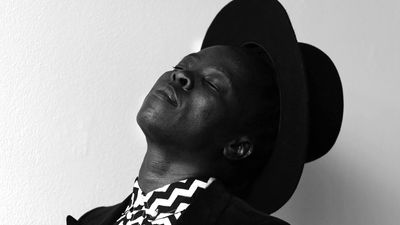Zanele Muholi on Second Chances and ‘Visual Activism’
We catch up with South Africa's Zanele Muholi, where she touches on her latest work and using a camera lens as a tool for activism.
This feature is in conjunction with our inaugural list—“OkayAfrica’s 100 Women”—where we take a look at the women making an impact on the African continent and in the diaspora.
Check out the biggest names in culture to young up-and-comers in "OkayAfrica's 100 Women" listhere.
South Africa’s formidable visual artist, artivist and community organizer, Zanele Muholi, is letting the world in on life in South Africa with powerful photography created to educate, inspire and heal.
Muholi is making waves across the global with thought-provoking photographs, some of which are self-portraits, and is renowned for humanizing South Africa’s black queer community, Faces and Phases, who are not always celebrated for being themselves. She photographed a reported 200 lesbians for the Faces and Phases project in part to document members of the community and as a response to the wave of homophobia in South Africa.
“Visual activism” is her calling and Muholi is doing it with creative flair and skill. The #OKAY100WOMEN honoree reflected about her life and work so far, she is participating in the 2017 Art Basel in Hong Kong.
Josephine Opar for OkayAfrica: Can you tell us the impetus of the work that you exhibited at the Cape Town Art Fair—Somnyama Ngonyama?
Zanele Muholi: The exhibited work is about the state of economy in South Africa. Foreign currency vs ZAR. It could also be interpreted as ilobolo (dowry) as a means of exchange between families, before a woman gets married.
What are you thankful for?
I am thankful for my life and being given a second chance. In December 2016, I had a major operation and survived that. I’m also grateful for the love I received from close friends and family members.
What advice would you give to your younger self?
Never procrastinate and continue to produce (visual) work. Even when times are hard, keep going until you reach your goals.
In what ways can a camera lens be used as a tool for activism?
There is so much going on in the world that needs to be said, but many voices are silenced.
If we can’t write or theorize those realities, then we should visualize our lives in ways that suit us for our own articulation. Photography gives us that opportunity to visualize harsh realities that violate human rights. We are able to document and distribute pictures widely, for the world to see.
What brings you joy in your work?
Seeing the end product of my work exhibited in various places locally and abroad, meaning we are reaching out to many audiences. Looking at how this same work is used by educators and scholars for research and education. Through photography, I get to establish and maintain relationships with participants in my work.
